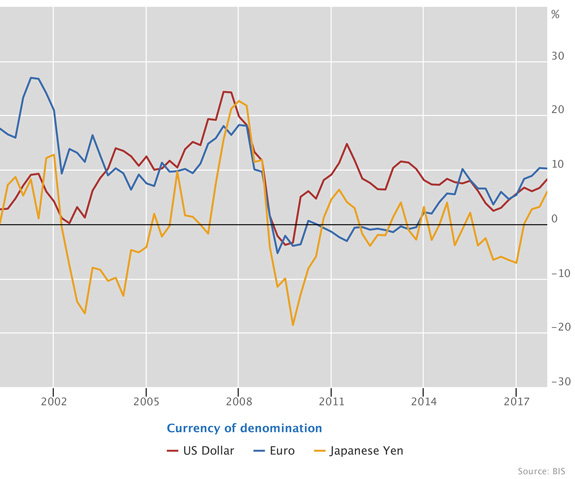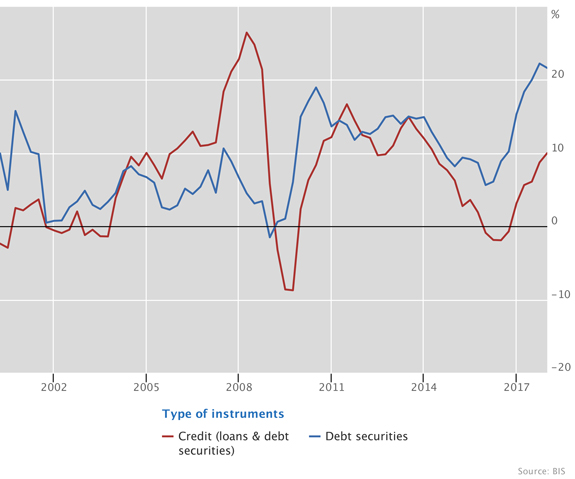BIS global liquidity indicators at end-December 2017
- Foreign currency credit continued to grow during 2017, with US dollar credit rising by 8% to $11.4 trillion and euro credit by 10% to €3.0 trillion.
- US dollar credit to emerging market economies (EMEs) rose by 10% in the year to end-2017, led by strong issuance of international debt securities, which grew by 22%.
Foreign currency credit continued to grow
Graph 1: Annual growth of foreign currency credit to non-resident non-banks (interactive graph).
Source: BIS global liquidity indicators (Tables E2.1, E2.2 and E2.3).
Foreign currency credit denominated in US dollars, euros and Japanese yen continued to grow in late 2017 (Graph 1). US dollar-denominated credit to non-bank borrowers outside the United States increased by 8% in the year to end-2017, to $11.4 trillion. Euro-denominated credit to non-bank borrowers outside the euro area rose by 10% in 2017 and stood at €3.0 trillion at the end of the year. After contracting in 2016, yen-denominated credit to non-bank borrowers outside Japan grew by 6% in 2017, ending the year at ¥44 trillion.
Debt securities drove growth in US dollar credit to EMEs
Graph 2: Annual growth of US dollar-denominated credit to EMEs (interactive graph).
Source: BIS global liquidity indicators (Table E2.1).
Against the backdrop of the depreciation of the US dollar in 2017, the annual growth rate of US dollar credit to non-bank borrowers in EMEs more than tripled from 3% at end-2016 to 10% at end-2017 (Graph 2). This was primarily driven by international debt securities, which grew at an unprecedented annual rate of 22% in the second half of 2017. US dollar bank loans to EMEs, which had contracted in 2016, grew by only about 2% over the same period. Nevertheless, loans (at $2.1 trillion) continued to account for the majority of the overall stock of $3.7 trillion.


